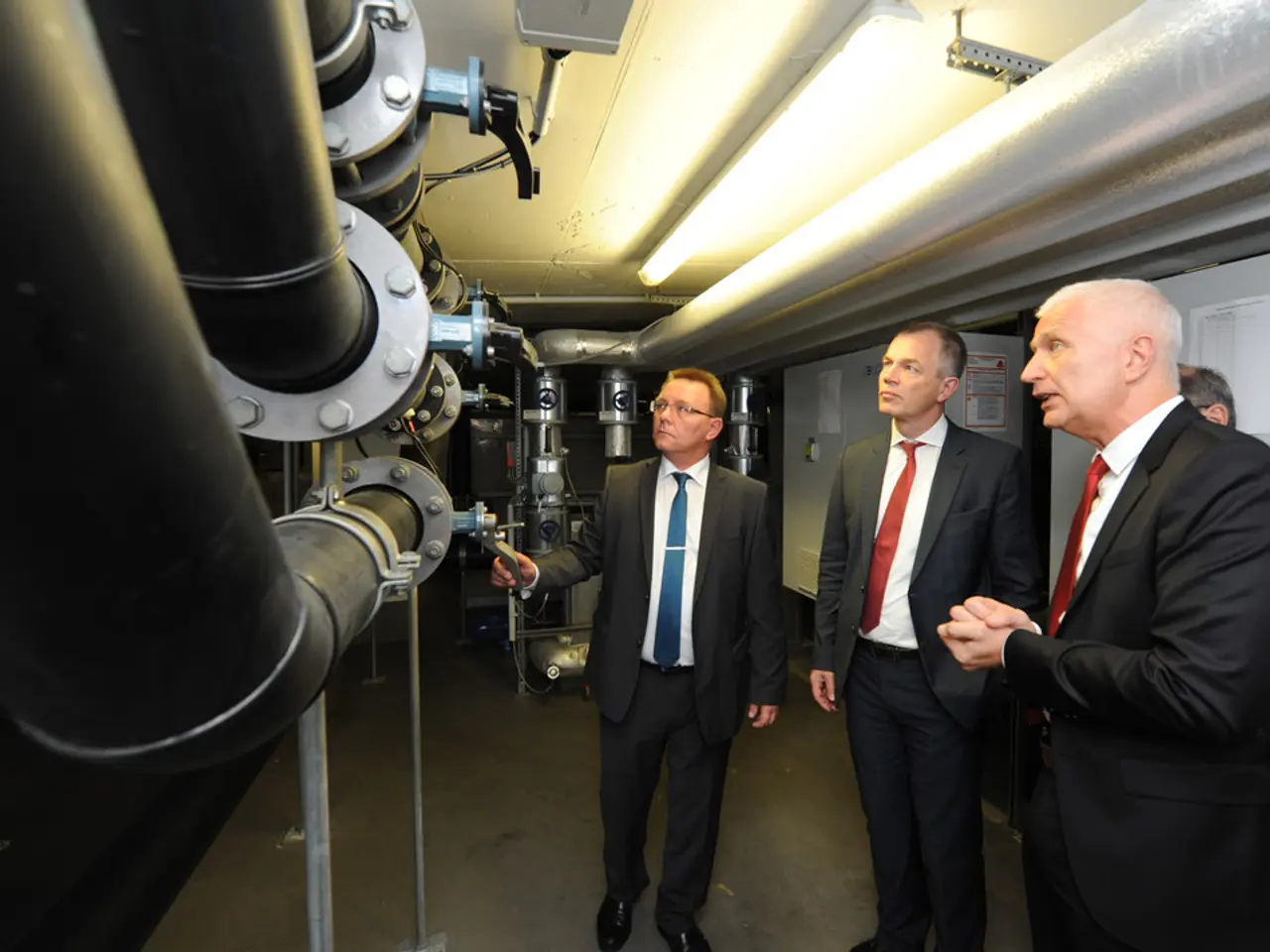Enhance Your AI Workflow by Proficiently Implementing Semantic Segmentation Techniques
In the rapidly evolving world of artificial intelligence (AI), semantic segmentation stands out as a transformative computer vision technique. This innovative method classifies each pixel in an image, offering a fine-grained understanding of complex visual environments.
### The Benefits of Semantic Segmentation
The precise pixel-level classification offered by semantic segmentation enables AI systems to delineate distinct objects and regions within a scene, a critical aspect for interpreting complex visual environments effectively. This fine-grained understanding is particularly beneficial in integrating large language models (LLMs) with vision models, allowing systems to process natural language queries to dynamically segment specific objects or regions based on instructions.
Semantic segmentation also benefits from techniques that leverage bounding box annotations from abundant object recognition datasets to boost training, improving model robustness and accuracy. Scaling data volume and diversity leads to substantial performance gains, as demonstrated on various segmentation benchmarks.
Moreover, the use of specialized neural networks such as U-Net, V-Net, LinkNet, Fully Convolutional Networks (FCNs), and Feature Pyramid Networks (FPNs) provides efficient, accurate segmentations, even with limited annotated data. These architectures support 3D or volumetric data segmentation, further expanding the reach of this technology.
### Real-World Applications
The versatility of semantic segmentation is evident in its diverse range of real-world applications. In the realm of autonomous vehicles and intelligent transportation systems (ITS), semantic segmentation enables real-time scene parsing, including delineating road lanes, detecting obstacles, pedestrians, and traffic signs. This empowers autonomous vehicles to navigate safely and adapt to complex urban environments, including adverse weather and occlusions.
In the medical field, architectures like U-Net and V-Net facilitate accurate segmentation of organs, tumors, or lesions from 2D or 3D scans, even with limited annotated datasets. This advances diagnostics, treatment planning, and monitoring.
Semantic segmentation also aids in pipeline inspection by detecting defects, leaks, and obstacles in challenging visual conditions underwater or industrial settings, improving safety and maintenance efficiency.
### A Closer Look at Semantic Segmentation
Key components of a semantic segmentation model include an encoder-decoder architecture, loss functions, and evaluation metrics. Popular encoder-decoder architectures for semantic segmentation include UNet, SegNet, and FCN. Common loss functions for semantic segmentation include Cross-Entropy Loss, Dice Loss, and Focal Loss. Popular evaluation metrics include Intersection over Union (IoU), Mean IoU (mIoU), and Frequency Weighted IoU.
To overcome challenges such as class imbalance, extreme class differences, and computational complexity, best practices include using pre-trained models, data augmentation, and fine-tuning. To prevent overfitting, apply augmentation techniques such as rotation, scaling, color jittering, and flipping. Balanced augmentation enhances the model's robustness to real-world variations.
### Real-World Use Cases
Semantic segmentation shines in various use cases, such as autonomous driving, medical imaging, and industrial inspection systems. In agriculture, crop classification, plant disease detection, and yield monitoring through drone imagery are applications where semantic segmentation proves particularly effective.
In the realm of healthcare, semantic segmentation aids in tumor detection, organ delineation, and diagnostic assistance in radiology. In smart manufacturing, semantic segmentation supports quality control, defect detection, and predictive maintenance. Geospatial analysis also benefits from semantic segmentation, with land cover classification, flood mapping, and urban planning with satellite images being notable use cases.
In essence, semantic segmentation integrated with advanced AI technologies fosters safer autonomous systems, improves healthcare outcomes, enhances industrial safety, and broadens AI applicability through flexible, scalable, and precise visual understanding.
- The integration of semantic segmentation with large language models (LLMs) allows AI systems to process natural language queries and dynamically segment specific objects or regions based on instructions, a key aspect in interpreting complex visual environments effectively.
- Techniques that leverage bounding box annotations from abundant object recognition datasets can boost semantic segmentation training, improving model robustness and accuracy, and enabling substantial performance gains on various segmentation benchmarks.
- Specialized neural networks like U-Net, V-Net, LinkNet, Fully Convolutional Networks (FCNs), and Feature Pyramid Networks (FPNs) provide efficient, accurate segmentations, even with limited annotated data, and support 3D or volumetric data segmentation, expanding the reach of this technology.
- In the realm of autonomous vehicles and intelligent transportation systems (ITS), semantic segmentation enables real-time scene parsing, including delineating road lanes, detecting obstacles, pedestrians, and traffic signs, thereby empowering autonomous vehicles to navigate safely and adapt to complex urban environments.




